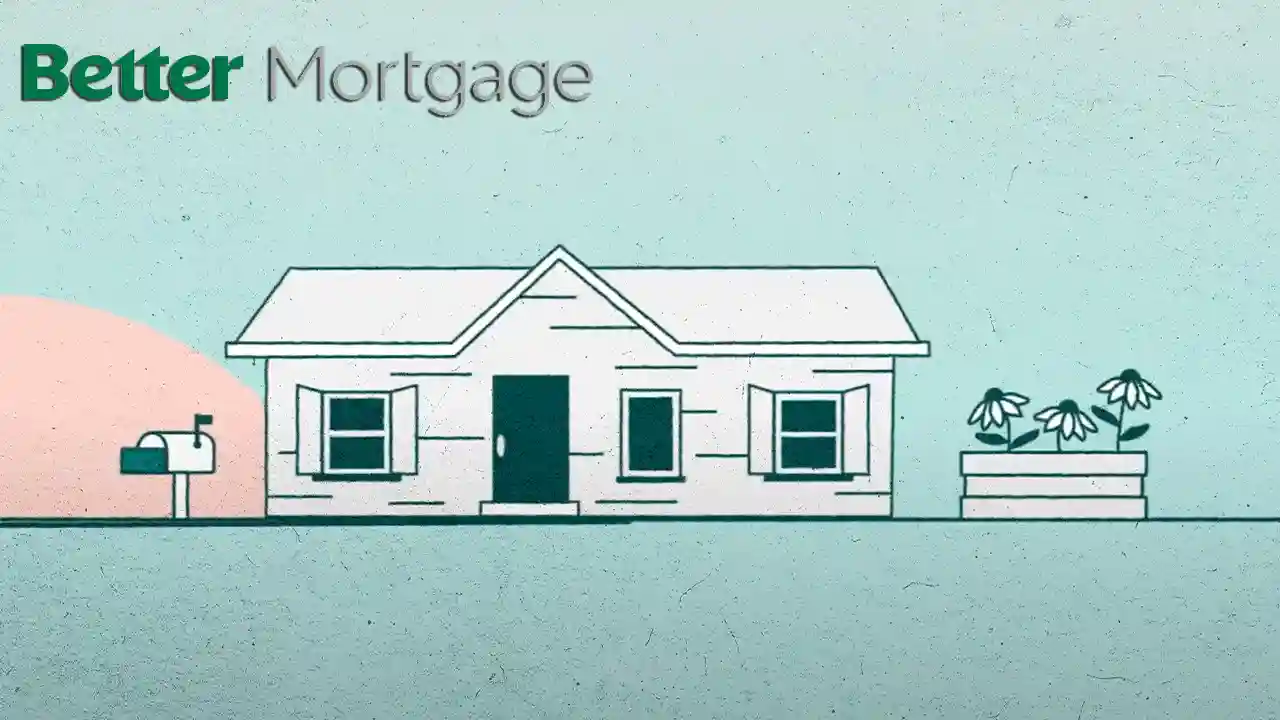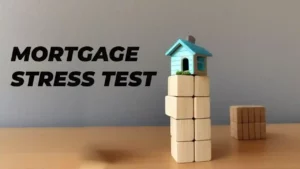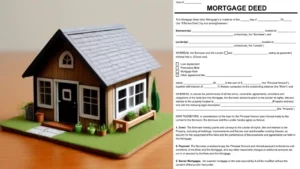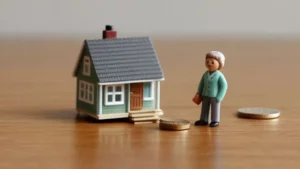Mortgagerateslocal.com – If you’re looking for a way to tap into your home equity, you might be interested in Better Mortgage’s home equity loan products. Better Mortgage is an online lender that offers a variety of mortgage options.
The service including conventional, jumbo, FHA, VA, and investment property loans. But did you know that Better Mortgage also offers a home equity line of credit (HELOC) that lets you access up to 90% of your home’s value?
We’ll review Better Mortgage’s HELOC product and compare it with other home equity loan options. We’ll also explain how to qualify, apply, and get the best rate for your HELOC with Better Mortgage.
By the end of this post, you’ll have a better idea of whether Better Mortgage’s HELOC is right for you and your financial goals.
What is a HELOC and how does it work?
A HELOC is a type of home equity loan that allows you to borrow money against the equity in your home. Equity is the difference between the current market value of your home and the amount you owe on your mortgage. For example, if your home is worth $300,000 and you owe $200,000 on your mortgage, you have $100,000 in equity.
A HELOC works like a credit card: you have a credit limit that you can use as needed, and you only pay interest on the amount you borrow. You can use your HELOC for any purpose, such as home improvements, debt consolidation, education expenses, or emergency funds. Unlike a credit card, however, a HELOC has a lower interest rate because it is secured by your home.
A HELOC typically has three phases: the draw period, the hold period, and the repayment period. During the draw period, you can withdraw funds from your HELOC up to your credit limit. You only pay interest on the amount you use, and you can make interest-only payments or pay more if you wish. The draw period usually lasts for a few years, depending on your lender and your contract.
During the hold period, you can no longer withdraw funds from your HELOC, but you can continue to pay interest only or pay more. The hold period is optional and not all lenders offer it. The hold period usually lasts for several years, depending on your lender and your contract.
During the repayment period, you have to pay back the principal and interest on your HELOC. You can no longer use your HELOC or make interest-only payments. The repayment period usually lasts for 10 to 20 years, depending on your lender and your contract.
What are the benefits and drawbacks of a HELOC?
A HELOC has some advantages and disadvantages that you should consider before applying. Here are some of the pros and cons of a HELOC:
Pros
- A HELOC gives you flexibility and convenience. You can use your HELOC as you need it, and you only pay interest on the amount you borrow. You can also choose to pay interest only or pay more during the draw and hold periods, which can lower your monthly payments and free up cash flow.
- A HELOC has a lower interest rate than other types of loans. Because a HELOC is secured by your home, it usually has a lower interest rate than unsecured loans, such as credit cards or personal loans. A lower interest rate can save you money on interest charges and help you pay off your debt faster.
- A HELOC may have tax benefits. Depending on your situation, you may be able to deduct the interest you pay on your HELOC from your income taxes. To qualify, you have to use your HELOC for home improvement purposes, and the total amount of your mortgage and HELOC debt cannot exceed $750,000. You should consult a tax professional to determine if you are eligible for this deduction.
Cons
- A HELOC puts your home at risk. Because a HELOC is secured by your home, you could lose your home if you fail to repay your HELOC. If you default on your HELOC, your lender can foreclose on your home and sell it to recover the debt. Therefore, you should only use your HELOC for essential or worthwhile purposes, and make sure you can afford the payments.
- A HELOC has variable interest rates. Unlike a fixed-rate home equity loan, a HELOC has a variable interest rate that can change over time. A variable interest rate is based on a benchmark rate, such as the prime rate, plus a margin set by your lender. If the benchmark rate goes up, so does your HELOC rate and your monthly payments. This can make your HELOC more expensive and harder to budget for.
- A HELOC may have fees and closing costs. Depending on your lender and your contract, you may have to pay fees and closing costs for your HELOC. These may include application fees, origination fees, appraisal fees, credit report fees, recording fees, and annual fees. Some lenders may waive some or all of these fees, but others may charge them upfront or add them to your HELOC balance.
How does Better Mortgage’s HELOC compare with other home equity loan options?
Better Mortgage’s HELOC is one of the many home equity loan options available in the market. To help you decide if it’s the best option for you, let’s compare it with two other common home equity loan products: a fixed-rate home equity loan and a cash-out refinance.
Fixed-rate home equity loan
A fixed-rate home equity loan is a type of home equity loan that gives you a lump sum of money that you have to repay over a fixed term with a fixed interest rate. A fixed-rate home equity loan is also known as a second mortgage, because it is a separate loan from your primary mortgage.
A fixed-rate home equity loan is different from a HELOC in several ways:
- A fixed-rate home equity loan has a fixed interest rate, while a HELOC has a variable interest rate. This means that your monthly payments for a fixed-rate home equity loan are predictable and stable, while your monthly payments for a HELOC can change depending on the market conditions.
- A fixed-rate home equity loan has a fixed term, while a HELOC has a variable term. This means that you have to repay your fixed-rate home equity loan within a certain number of years, while you can use and repay your HELOC as long as it is open.
- A fixed-rate home equity loan gives you a lump sum of money, while a HELOC gives you a credit line. This means that you get all the money you need at once with a fixed-rate home equity loan, while you can access the money as you need it with a HELOC.
A fixed-rate home equity loan may be a better option than a HELOC if you:
- Need a large amount of money for a specific purpose, such as a major home renovation or a debt consolidation.
- Prefer a fixed interest rate and a fixed monthly payment that are easier to budget for.
- Don’t need ongoing access to your home equity or want to avoid the temptation of overspending.
Cash-out refinance
A cash-out refinance is a type of mortgage refinancing that allows you to replace your existing mortgage with a new one that has a higher loan amount. You can use the difference between the old and new loan amounts to access your home equity in cash. A cash-out refinance is also known as a first mortgage, because it is the primary loan on your home.
A cash-out refinance is different from a home equity line of credit in several ways:
- A cash-out refinance replaces your existing mortgage, while a home equity line of credit is an additional loan on top of your existing mortgage. This means that you have to pay off your old mortgage and start a new one with a cash-out refinance, while you can keep your old mortgage and add a new one with a HELOC.
- A cash-out refinance may have a lower interest rate than a home equity line of credit, depending on the market conditions and your credit profile. This is because a cash-out refinance is a first mortgage, which usually has a lower interest rate than a second mortgage, such as a HELOC. However, a cash-out refinance may also have higher closing costs than a HELOC, which can reduce the savings from the lower interest rate.
- A cash-out refinance may affect your mortgage terms, while a home equity line of credit may not. This means that you may have to extend your loan term, change your loan type, or reset your amortization schedule with a cash-out refinance, which can affect your total interest cost and your equity build-up. With a HELOC, you can keep your existing mortgage terms and only pay interest on the amount you borrow.
A cash-out refinance may be a better option than a home equity line of credit if you:
- Want to take advantage of lower interest rates and save money on your mortgage payments.
- Have a high interest rate or a short remaining term on your existing mortgage and want to refinance anyway.
- Need a large amount of money for a long-term purpose, such as a home purchase or a retirement fund.
How to qualify for a HELOC with Better Mortgage?
To qualify for a HELOC with Better Mortgage, you need to meet certain requirements, such as:
- You have to own a primary residence, a second home, or an investment property in one of the 50 states or Washington, D.C.
- You have to have at least 10% equity in your home, which means that your loan-to-value (LTV) ratio cannot exceed 90%. Your LTV ratio is the percentage of your home’s value that you owe on your mortgage. For example, if your home is worth $300,000 and you owe $240,000 on your mortgage, your LTV ratio is 80% ($240,000 / $300,000 = 0.8).
- You have to have a good credit score, which means that your FICO score cannot be lower than 620. Your FICO score is a numerical representation of your creditworthiness, based on your credit history, payment behavior, debt level, and other factors.
- You have to have a stable income and a low debt-to-income (DTI) ratio, which means that your monthly debt payments cannot exceed 43% of your monthly income. Your DTI ratio is the percentage of your income that goes toward paying your debts, such as your mortgage, credit cards, student loans, and other obligations.
How to apply for a HELOC with Better Mortgage?
To apply for a HELOC with Better Mortgage, you need to follow these steps:
- Visit Better Mortgage’s website and click on the “Home Equity” tab. You’ll see a brief overview of Better Mortgage’s HELOC product and a button that says “Get started”.
- Click on the “Get started” button and create an account with Better Mortgage. You’ll need to provide some basic information, such as your name, email, phone number, and password.
- Complete a short online questionnaire that asks about your home, your mortgage, your income, your assets, your debts, and your credit. You’ll also need to provide your social security number and consent to a credit check.
- Get an instant pre-approval decision and a preliminary HELOC offer from Better Mortgage. You’ll see your estimated credit limit, interest rate, fees, and monthly payments for your HELOC. You can also adjust your HELOC amount and term to see how they affect your offer.
- Upload the required documents to verify your information and finalize your HELOC application. You’ll need to provide documents such as your pay stubs, bank statements, tax returns, mortgage statements, homeowners insurance, and property tax bills. You can upload your documents online or use Better Mortgage’s mobile app to scan them with your phone.
- Schedule a home appraisal to determine the current value of your home and your equity. Better Mortgage will arrange an appraiser to visit your home and inspect its condition, features, and improvements. You’ll have to pay a fee for the appraisal, which may vary depending on your location and your home’s size and type.
- Review and sign your HELOC agreement and disclosures. You’ll receive your final HELOC offer and terms from Better Mortgage, along with the required disclosures and notices. You’ll have to review and sign them electronically, and you’ll have a three-day right of rescission to cancel your HELOC if you change your mind.
- Access your HELOC funds and start using them as you wish. Once your HELOC is approved and funded, you’ll receive a HELOC card and a HELOC account number from Better Mortgage. You can use your HELOC card to make purchases or withdraw cash from ATMs, or you can transfer funds from your HELOC account to your bank account online or by phone.
How to get the best rate for your HELOC with Better Mortgage?
The interest rate for your HELOC with Better Mortgage depends on several factors, such as your credit score, your LTV ratio, your DTI ratio, the prime rate, and the margin set by Better Mortgage. To get the best rate for your HELOC, you can try the following tips:
- Improve your credit score. Your credit score is one of the most important factors that affect your HELOC rate. A higher credit score indicates that you are a lower risk borrower, and you can qualify for a lower rate. To improve your credit score, you can pay your bills on time, reduce your debt balances, avoid applying for new credit, and check your credit report for errors.
- Increase your home equity. Your home equity is another key factor that affects your HELOC rate. A higher home equity means that you have a lower LTV ratio, and you can qualify for a lower rate. To increase your home equity, you can pay down your mortgage principal, make home improvements that add value to your home, or wait for your home value to appreciate over time.
- Lower your debt-to-income ratio. Your debt-to-income ratio is another factor that affects your HELOC rate. A lower debt-to-income ratio means that you have more income to cover your debt payments, and you can qualify for a lower rate. To lower your debt-to-income ratio, you can increase your income, pay off your debts, or consolidate your debts with a lower interest rate.
- Shop around and compare offers. Better Mortgage is not the only lender that offers HELOCs. You can shop around and compare offers from different lenders, such as banks, credit unions, online lenders, and brokers. You can compare the interest rates, fees, terms, and features of different HELOCs, and choose the one that best suits your needs and preferences.
Conclusion
A Home Equity Loan gives you flexibility and convenience, a lower interest rate, and possible tax benefits. However, a HELOC also puts your home at risk, has variable interest rates, and may have fees and closing costs.
To qualify for a HELOC with Better Mortgage, you need to have at least 10% equity in your home, a good credit score, a stable income, and a low debt-to-income ratio. If you’re interested in Better Mortgage’s HELOC product, you need to complete an online questionnaire, upload the required documents, schedule a home appraisal, and sign your HELOC agreement.




